
Street Fighter II: The World Warrior is a 2D fighting game developed by Capcom and originally released for arcades in 1991. It is the second installment in the Street Fighter series and the sequel to 1987's Street Fighter. It is Capcom's fourteenth game to use the CP System arcade system board. Street Fighter II vastly improved many of the concepts introduced in the first game, including the use of special command-based moves, a combo system, a six-button configuration, and a wider selection of playable characters, each with a unique fighting style.
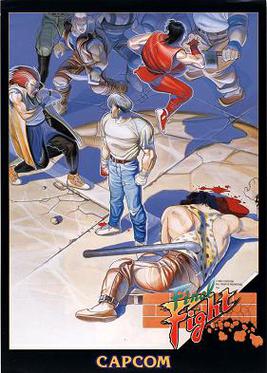
Final Fight is a side-scrolling beat-'em-up video game produced by Capcom. Originally released as an arcade game in 1989, it was the seventh title released for the CP System hardware. Set in the fictional Metro City, the game lets the player control one of three street fighters: former pro wrestler and city mayor Mike Haggar, expert brawler Cody Travers, and modern-day ninja Guy. The trio set out to rescue Jessica when she is kidnapped by the Mad Gear Gang.

Super Street Fighter II: The New Challengers is a competitive fighting game produced by Capcom and originally released as an arcade game in 1993. It is the fourth game in the Street Fighter II sub-series of Street Fighter games, following Street Fighter II: Hyper Fighting. It refines and balances the existing character roster from the previous versions, and introduces four new characters. It is the first game on Capcom's CP System II hardware, with more sophisticated graphics and audio over the original CP System hardware used in previous versions of Street Fighter II.

Final Fight 2 is a 1993 side-scrolling beat 'em up video game released by Capcom for the Super Nintendo Entertainment System. It is the direct sequel to the 1989 coin-operated arcade game Final Fight, which was previously also released for the SNES. Final Fight 2 was developed by Capcom's consumer division with no preceding coin-op version. The game was re-released onto Wii's Virtual Console service in 2009 for the North American and European regions.

Teenage Mutant Ninja Turtles: Turtles in Time, released as Teenage Mutant Hero Turtles: Turtles in Time in Europe, is a beat 'em up arcade video game produced by Konami and released in 1991. A sequel to the original Teenage Mutant Ninja Turtles arcade game, it is a scrolling beat 'em up type game based mainly on the 1987 TMNT animated series. Originally an arcade game, Turtles in Time was ported to the Super Nintendo Entertainment System in 1992 under the title Teenage Mutant Ninja Turtles IV: Turtles in Time, continuing the numbering from the earlier Turtles games released on the original NES. That same year, a game that borrowed many elements, Teenage Mutant Ninja Turtles: The Hyperstone Heist, was released for the Sega Genesis.

P.O.W.: Prisoners of War, released in Japan as Datsugoku -Prisoners of War-, is a side-scrolling beat 'em up game produced by SNK and originally released as an arcade game in 1988.
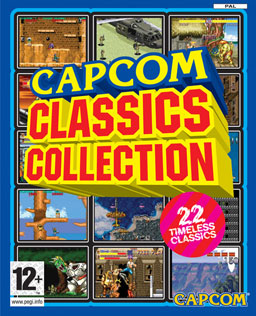
Capcom Classics Collection is a compilation of arcade games released by Capcom for the PlayStation 2 and Xbox on September 27, 2005 in North America and in 2006 in Japan. It was developed by Digital Eclipse Software, Sensory Sweep, and its Japanese developer Klein Computer Entertainment. A second volume, Capcom Classics Collection Vol. 2, was released on November 24, 2006 in North America, for PlayStation 2 and Xbox. The second volume as well as the Xbox version of the first volume were not released in Japan.

Super Ghouls 'n Ghosts, known as Chou Makaimura in Japan, is a platform video game developed and published by Capcom for the Super Nintendo Entertainment System in 1991. As the third game in the Ghosts 'n Goblins series and the first not to be released for the arcade, it again depicts knight Arthur saving Princess Guinevere and the kingdom from Emperor Sardius, who has cast a spell that has revived the Ghoul Realm.
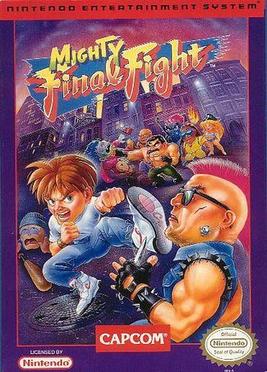
Mighty Final Fight is a side-scrolling beat-'em-up released by Capcom for the Nintendo Entertainment System in 1993. It is a spinoff of Capcom's 1989 arcade game Final Fight, which was previously ported to the Super NES. Unlike the CP System arcade classic and its SNES ports, the characters in this edition are depicted in a comical childlike "super deformed" or "chibi" art style in the same spirit as Famicom games such as both Konami's Kid Dracula and Namco's Splatterhouse: Wanpaku Graffiti.

Forgotten Worlds, titled Lost Worlds in Japan, is a side-scrolling shooter video game by Capcom, originally released as a coin-operated arcade game in 1988. It is notable for being the first title released by Capcom for their CP System arcade game hardware.

Magic Sword: Heroic Fantasy is a 1990 hack-and-slash arcade game by Capcom. The game casts the player as a hero who must fight his way through a mystical tower in order to save the world. The player can use a sword, axe or magic, and can also rescue and recruit potential allies of various character classes, each of which has its own special abilities.
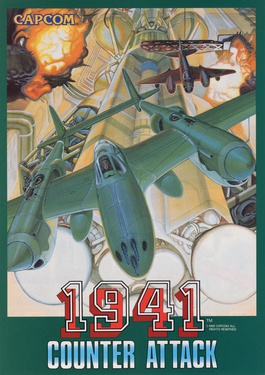
1941: Counter Attack is a vertical scrolling shooter arcade game by Capcom, released in February 1990. It is the prequel to 1942, and the third game in the 19XX series. It was ported to the SuperGrafx in 1991 and to GameTap. It was released on Capcom Classics Collection Remixed for the PlayStation Portable and Capcom Classics Collection Vol. 2 for PlayStation 2 and Xbox. It was followed by 19XX: The War Against Destiny in 1996.

Armored Warriors, known in Japan as Powered Gear - Strategic Variant Armor Equipment, is a 1994 mecha-themed beat-em-up game released by Capcom as a coin-operated video game for their CP System II hardware. The "Variant Armors" mecha featured in the game were later used for the head-to-head fighting game Cyberbots: Full Metal Madness. After being included with the Retro-Bit Super Retro-Cade dedicated console, the game would later be released digitally as part of the Capcom Beat 'Em Up Bundle on September 18, 2018, for the Nintendo Switch, PlayStation 4, Xbox One, and Windows. and Capcom Arcade Stadium on February 17, 2021, for the Nintendo Switch, an later that year on PlayStation 4, Xbox One and Steam.
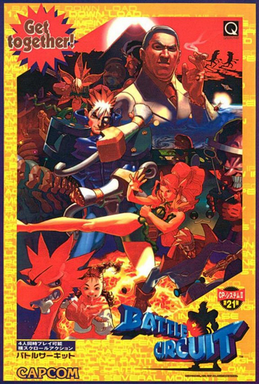
Battle Circuit is an action beat 'em up game developed and published by Capcom for the CPS-2 arcade hardware for Japan and Europe in 1997. Taking place in an alternate future earth, the game revolves around a group of bounty hunters who must capture the mad scientist Dr. Saturn and secure a sophisticated computer disc carrying a program known as the "Shiva System". The game contains comic-like characters in a futuristic science fiction setting. Battle Circuit was Capcom's last beat 'em up game developed for the arcades. The game made its home console debut in Capcom Beat 'Em Up Bundle on September 18, 2018 digitally for the Nintendo Switch, PlayStation 4, Xbox One, and Windows.

Street Fighter II Turbo: Hyper Fighting is a competitive fighting game released by Capcom for arcades in 1992. It is the third arcade version of Street Fighter II, part of the Street Fighter franchise, following Street Fighter II: Champion Edition, and was initially released as an enhancement kit for that game. Released less than a year after the previous installment, Turbo introduced a faster playing speed and new special moves for certain characters, as well as further refinement to the character balance.

The King of Dragons is a 1991 beat-'em-up video game by Capcom that follows players as they control characters through the kingdom of Malus to defeat monsters led by the dragon Gildiss. It features a level advancement system, allowing character attributes to be upgraded as players progress through the game. The game's music was composed by Yoko Shimomura.

Ghosts 'n Goblins, known in Japan as Makaimura, is a run-and-gun platform video game series created by Tokuro Fujiwara and developed by Capcom. The first entry in the series was Ghosts 'n Goblins, released in arcades on July 7, 1985. The series has subsequently been ported to and released on a variety of personal computers, game consoles and mobile platforms and spawned several sequels and spin-offs.

Ghosts 'n Goblins: Gold Knights and Ghosts 'n Goblins: Gold Knights II, released in Japan as Makaimura Kishi Retsuden and Makaimura Kishi Retsuden II respectively, are a pair of run and gun platform games developed and published by Capcom for iOS. Both titles were removed from the Apple App Store on May 10, 2016.

Captain Commando is a 1991 futuristic side-scrolling beat 'em up originally developed and published by Capcom as an arcade video game, and later ported to several other platforms. It was the seventeenth game produced for the company's CP System hardware. The game stars the titular superhero who was originally conceived as a fictional spokesman used by Capcom USA in the company's console games during the late 1980s. On September 13, 2018, Capcom announced Capcom Beat 'Em Up Bundle with Captain Commando being one of seven titles and released digitally for Nintendo Switch, PlayStation 4, Xbox One, and Windows on September 18, 2018.

Capcom Beat 'Em Up Bundle is a compilation of Capcom arcade beat 'em ups developed and published by Capcom. The collection was released digitally for Nintendo Switch, PlayStation 4, and Xbox One in September 2018, with the game being released for Windows later in October 2018. A physical release occurred in Japan on December 6 for PlayStation 4 and Nintendo Switch.





















